The Waco Before Waco
|
by Richard Poe Wednesday, September 22, 1999 12:00 am Eastern Time |
Archives 1 Comment |
Preemptive Strike: Investigative Report on the Philadelphia MOVE Bombing, The Waco Before Waco, NewsMax.com, September 22, 1999 |

Richard Poe
LOREM ipsum dolor sit amet, consectetur adipiscing elit, sed do eiusmod tempor incididunt ut labore et dolore magna aliqua. Ut enim ad minim veniam, quis nostrud exercitation ullamco laboris nisi ut aliquip ex ea commodo consequat. Duis aute irure dolor in reprehenderit in voluptate velit esse cillum dolore eu fugiat nulla pariatur. Excepteur sint occaecat cupidatat non proident, sunt in culpa qui officia deserunt mollit anim id est laborum. — RICHARD POE, Month 00, 0000 |
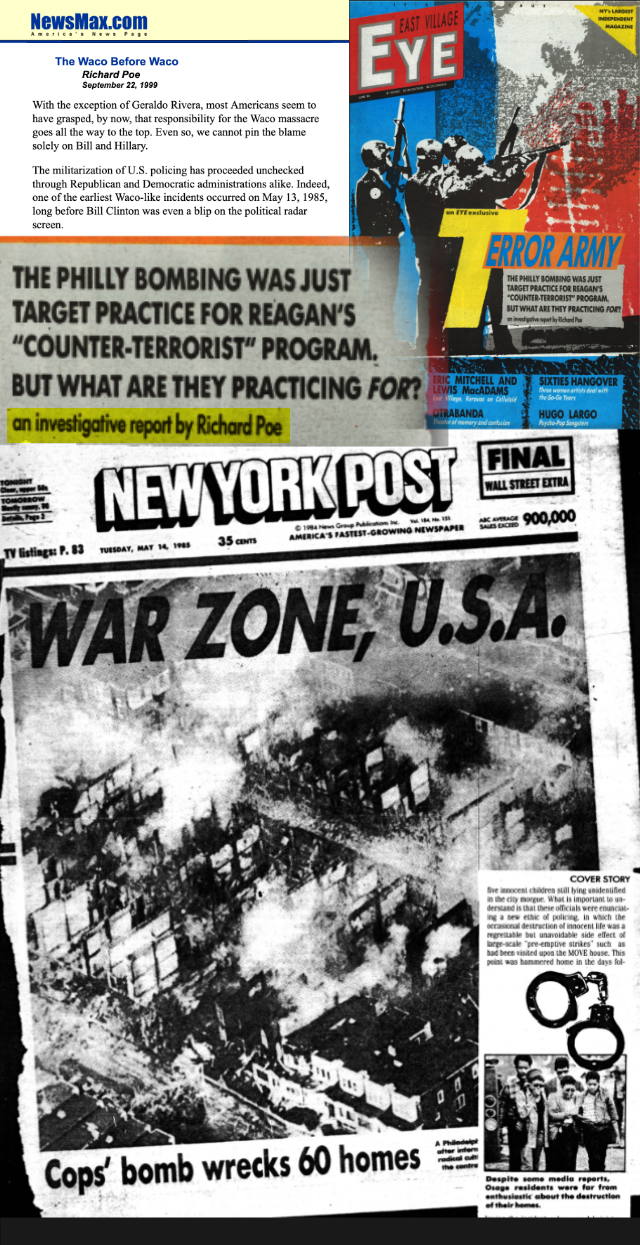
WITH THE EXCEPTION of Geraldo Rivera, most Americans seem to have grasped, by now, that responsibility for the Waco massacre goes all the way to the top. Even so, we cannot pin the blame solely on Bill and Hillary.
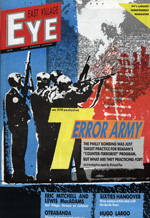
The militarization of U.S. policing has proceeded unchecked through Republican and Democratic administrations alike. Indeed, one of the earliest Waco-like incidents occurred on May 13, 1985, long before Bill Clinton was even a blip on the political radar screen.
That day, police emptied 10,000 rounds of ammunition into a house in West Philadelphia, in a ninety-minute period. They fired Uzis, shotguns, M-16s, .50-caliber machineguns, Browning semiautomatic rifles and M-60 machineguns. A 20mm antitank gun was also on hand, though police claim they never fired it.
Later that day, a canvas satchel containing four and a half pounds of C-4 plastic explosive was dropped on the house by helicopter. The ensuing fire consumed not only that house, but sixty others, leaving the neighborhood a smoking ruin.
At whom was all this firepower aimed? The targets were four men, three women and six children – members of an anti-government, urban survivalist cult called MOVE. Police say the cultists shot first, after lawmen tried to arrest four of them.
But Police Commissioner Gregore Sambor inadvertently cast doubt on this claim when he testified that the first shots came from automatic weapons. MOVE had no such weapons – only two shotguns, two pistols and one .22-caliber rifle.
In any case, all MOVE members in the house were killed that day, except for one woman and one 13-year-old boy.
Back in 1986, I attended the trial of Ramona Africa – the lone adult survivor of the MOVE house – and wrote a cover story about the massacre for the East Village Eye. In that article, I suggested that the scorched-earth tactics used against MOVE were a trial balloon, designed to test public reaction to a new style of ultra-violent policing.
My theory rested partly on the fact that federal agencies had encouraged and facilitated the MOVE massacre behind the scenes. The FBI, for instance, provided C-4, a military explosive forbidden to civilian police. The Bureau of Alcohol, Tobacco and Firearms provided permission and tax waivers for other military weapons.
Most curious, however, were the “reforms” enacted in the massacre’s wake. Arguing that the slaughter had resulted from random bungling by overzealous cops, Mayor W. Wilson Goode announced a sweeping reorganization supposedly aimed at increasing the professionalism of Philadelphia police.
Goode’s proposals ranged from the creation of an elite counter-terrorist strike force, to the establishment of unprecedented liaisons with federal law enforcement agencies, to training for police at military facilities, and even to anti-terrorist schools and “crisis management” training for city officials by the Federal Emergency Management Agency (FEMA).
In short, Goode called for more of the very same medicine that had caused the problem in the first place: outside meddling from federal agents.
Years later, in 1993, federal “crisis management” once again made headlines, this time in Waco, Texas. Parallels between the MOVE and Waco massacres read like guidelines drawn from the same tactical handbook.
In both cases, last-minute offers to negotiate were ignored by lawmen. In both cases, fires were deliberately allowed to burn out of control. Both at Waco and at the MOVE house, people trying to escape the flames were forced back inside by gunfire.
Even more startling, lawmen in both cases claimed that the cultists had set fire to themselves. In the midst of a civil suit brought by MOVE survivors and relatives, Lt. Frank Powell suddenly anounced that the fire had been deliberately set by MOVE members, not by the bomb he dropped.
“They chose their own end,” Powell told reporters on May 1, 1996. MOVE members had doused the roof with flammable liquid, then torched it, Powell said.
His claim – which contradicted the findings of the city Fire Marshal and the mayor’s MOVE Commission – evidently did not impress the jury, which awarded Ramona Africa and relatives of two other MOVE victims $1.5 million in damages.
If the MOVE bombing really was a trial balloon, it was evidently a successful one. The media accepted the story of bungling, overzealous cops. Public outrage was confined to ineffectual liberal handwringing, much of it centered around the irrelevant fact that the MOVE victims were black.
Is Waco another trial balloon? Have the feds upped the ante this time, with a blatant use of Delta Force commandos, a higher body count, and a “whiter” list of victims (about half the Waco dead were Anglo, the other half mostly black, with some Mexicans and Asians)?
Very likely. If we fail to challenge this latest atrocity, even ghastlier Wacos may lie ahead.
Cross-posted from NewsMax.com 09.22.99


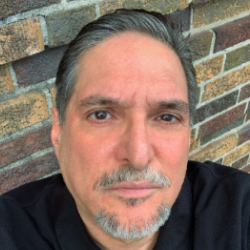
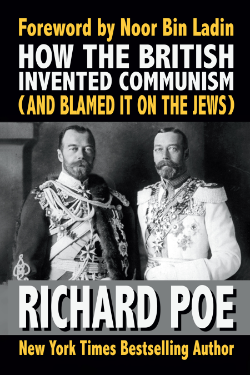
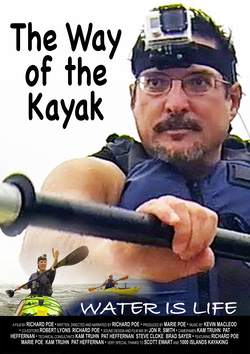
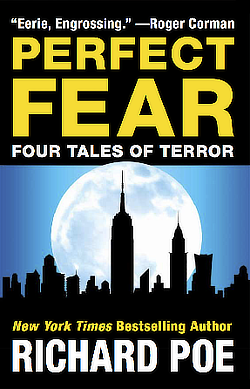
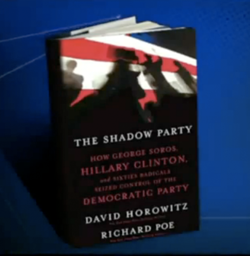

See reader comments at FreeRepublic.com:
Posted on 10/07/1999 12:56:39 PDT
Posted on 09/22/1999 15:09:19 PDT
Posted on 09/22/1999 12:01:30 PDT